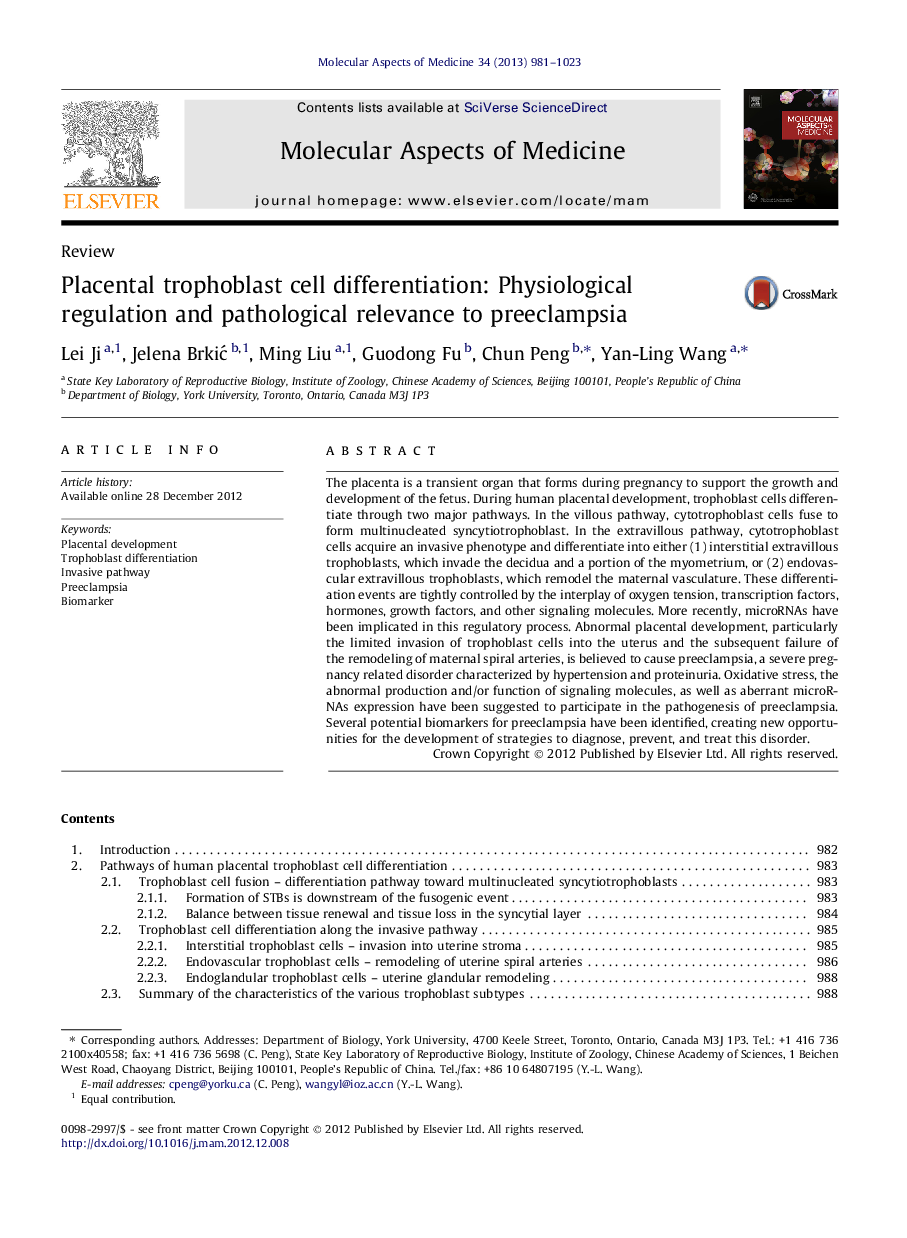| Article ID | Journal | Published Year | Pages | File Type |
|---|---|---|---|---|
| 1995734 | Molecular Aspects of Medicine | 2013 | 43 Pages |
Abstract
The placenta is a transient organ that forms during pregnancy to support the growth and development of the fetus. During human placental development, trophoblast cells differentiate through two major pathways. In the villous pathway, cytotrophoblast cells fuse to form multinucleated syncytiotrophoblast. In the extravillous pathway, cytotrophoblast cells acquire an invasive phenotype and differentiate into either (1) interstitial extravillous trophoblasts, which invade the decidua and a portion of the myometrium, or (2) endovascular extravillous trophoblasts, which remodel the maternal vasculature. These differentiation events are tightly controlled by the interplay of oxygen tension, transcription factors, hormones, growth factors, and other signaling molecules. More recently, microRNAs have been implicated in this regulatory process. Abnormal placental development, particularly the limited invasion of trophoblast cells into the uterus and the subsequent failure of the remodeling of maternal spiral arteries, is believed to cause preeclampsia, a severe pregnancy related disorder characterized by hypertension and proteinuria. Oxidative stress, the abnormal production and/or function of signaling molecules, as well as aberrant microRNAs expression have been suggested to participate in the pathogenesis of preeclampsia. Several potential biomarkers for preeclampsia have been identified, creating new opportunities for the development of strategies to diagnose, prevent, and treat this disorder.
Related Topics
Life Sciences
Biochemistry, Genetics and Molecular Biology
Biochemistry
Authors
Lei Ji, Jelena BrkiÄ, Ming Liu, Guodong Fu, Chun Peng, Yan-Ling Wang,
